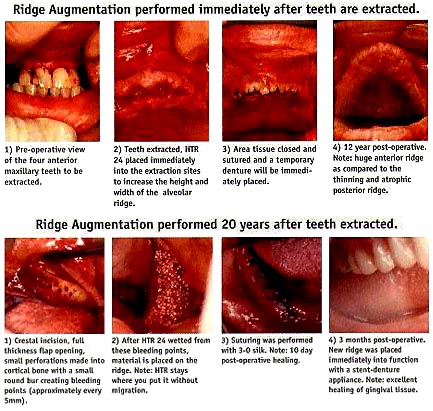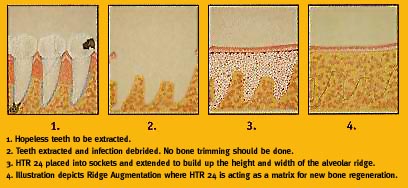|
|

 Ridge Augmentation is needed by a significant portion of the senior citizen population.
Ridge Augmentation is needed by a significant portion of the senior citizen population.
According to the ADA statistics, 41% of the population 65 years of age and older (approximately 3 million people) are edentulous (i.e., have no teeth) and have severely atrophied mandibles which no longer support dentures.
In general, jawbone atrophy and shrinkage occurs as a result of gum disease or tooth loss. Such bone loss limits the ability to successfully place dental implants and/or full or partial dentures due to the absence of sufficient jawbone height and width. However, when this bone loss occurs, Bioplant HTR can be used to restore the receded jawbone’s height and width (Ridge Augmentation). Bioplant HTR Synthetic Bone alloplast is the ideal grafting material to treat complete or partial edentulism. An onlay graft with Bioplant HTR allows for a new prosthetic supporting ridge to be formed on a previously flat mandible or maxilla. This restoration of the jawbone will allow the patient to successfully have a partial or full denture or, at a later date, implants. The most common contraindication for the successful placement of dental implants and full or partial dentures is the absence of sufficient jawbone height and width.
Whether Bioplant HTR is utilized immediately after extraction or years later on the atrophic ridge, implants may be inserted into the Bioplant HTR augmented ridge after one year. This converts the removable prosthetics into an implant-supported appliance.
When used to preserve and to build up the ridge following dental extractions, Bioplant HTR requires little if any training and takes less than five minutes to place and suture.



|
 |
 |
|


